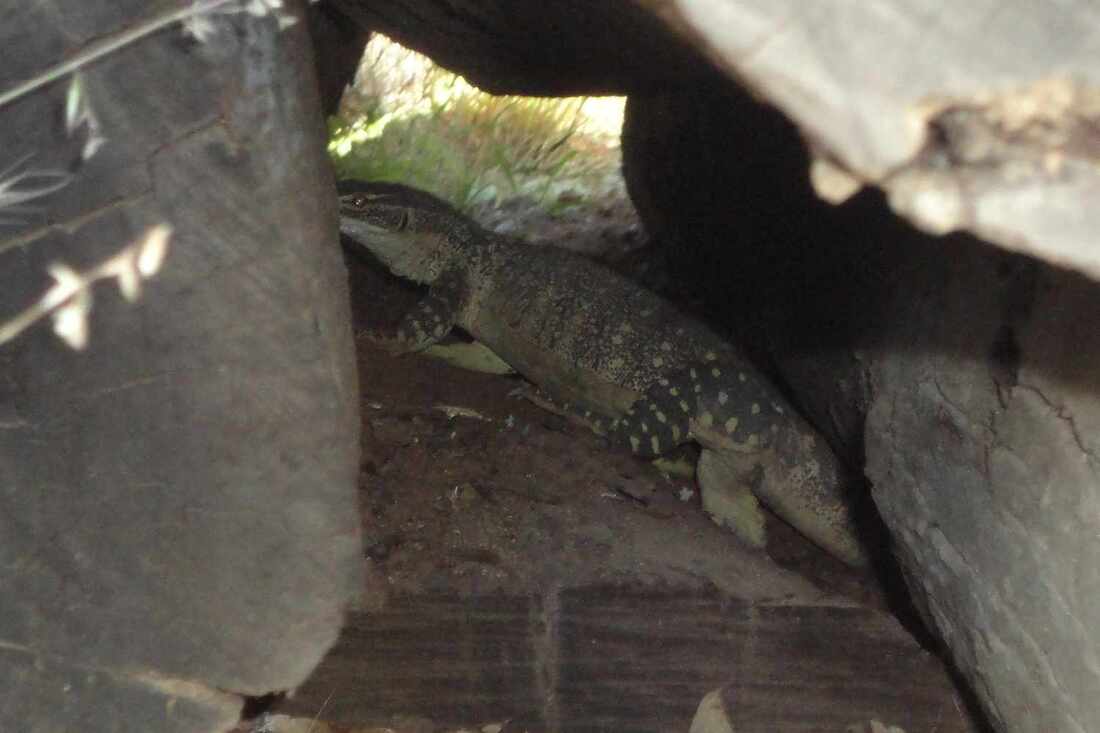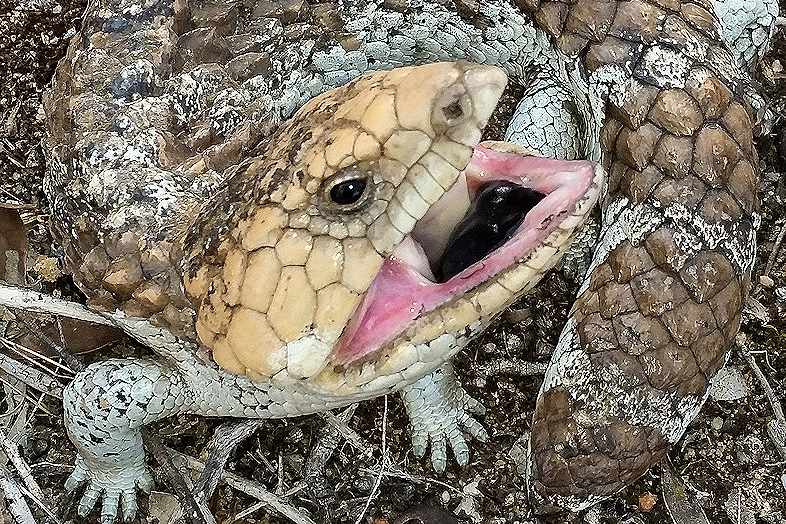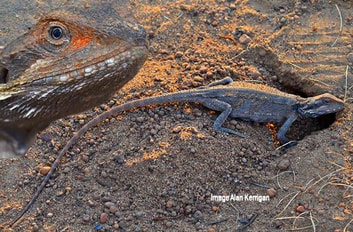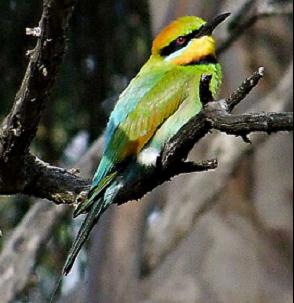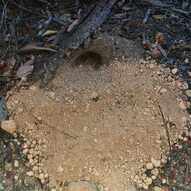 goanna hole
goanna hole As soon as the weather warms up, you will see fist-sized holes with a round top and a flat base appearing in sandy and gravelly soils. These were dug by Varanus gouldii variously known as ‘racehorse goanna’ or a ‘sand goanna’ or even a Gould’s monitor. They commonly hide in hollow logs and may be seen sunning themselves on roads, rocks, and logs. They must be able to sense grubs or beetles in the soil.
Racehorse goannas may look fierce but always run away at great speed, which can frighten the daylights out of some. They have been rumoured to climb people, mistaking them for trees, but in my experience take off in the opposite direction. If you are a nervous type, just walk next to a tall person (who is also useful if there is a chance of lightning).
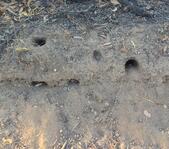 rainbow bee eater burrows
rainbow bee eater burrows 
